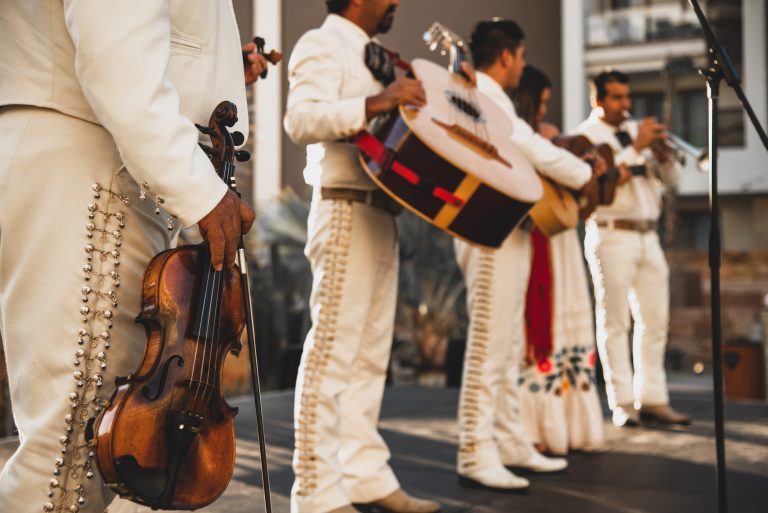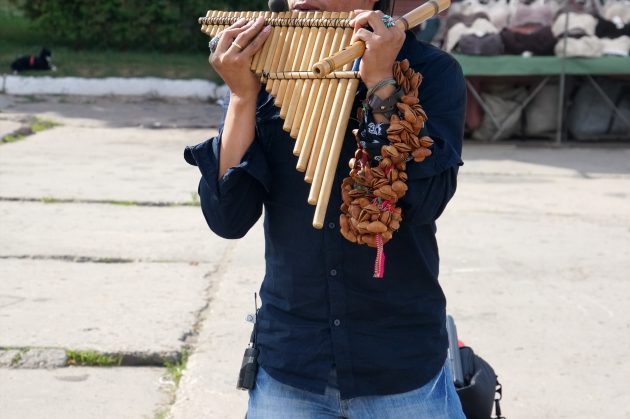
9 Musical Instruments From Latin America You Should Begin To Learn
16 September, 2020Learning a new musical instrument could broaden your artistic skills and enhance self-expression. It could also develop a deeper understanding and appreciation of the countries and cultures where specific instruments originated. For instance, picking up a Latin American instrument would reverb this culture’s richness when it comes to the rhythm expressed through the varied countries’ traditional instruments.
Picking up this hobby at any age isn’t a hindrance since most of these instruments are fairly easy to learn. To help you find out more about the ease of learning these unique rhythmic things, here’s a compilation of nine musical instruments from Latin America you should begin to learn.
1. Pandeiro
A pandeiro resembles a tambourine. It’s a handheld instrument accompanied by cymbals on the side. You can easily tune the pandeiro to find different sounds when deciding to play it with your fingers or your palm. The pandeiro is commonly used in gatherings where people sing songs in harmony, such as church events.
Various artists have also used the pandeiro in non-traditional musical forms. It can be tuned into a low bass sound like a drum with jingles. This can be done by mounting it on a stand and playing it together with a modern drum kit. Whether you play the pandeiro in traditional or modern form, it’s an instrument worth learning.
2. Conga
Originally from Cuba where the music is typically upbeat and happy, the conga is a single-headed drum that comes in a set of two. Various rhythmic beats can be achieved by striking the head of the conga. As you learn it, you’ll observe how the type of strike and where you strike it achieves a specific sound. Four fingers striking the head will produce a distinct pitch, while fingers held up against the drum will produce a muffled sound. The base is produced by striking the whole palm on the head, and a slap on the head produces a pop. Learning the conga is a fun way of discovering how different parts of your hand can produce different sounds on a single instrument.
3. El Bombo Laguero
Also in the drum family is El Bombo Laguero. This instrument is made of a hollowed tree trunk and then covered with animal skin such as goat, cow, or sheep. The fur left on the hide makes for a deep and dark sound that can be heard from miles away. It’s played by hanging to the side of the drummer whose arm drapes over the drum to play it from above while striking from the front. A mallet is used to strike the drum and wooden rim for alternate sounds. This instrument requires some physical strength, though one gets used to the action with practice.
4. Maracas
The maracas are said to have originated from various places, including Venezuela. This instrument is a hollow shell with seeds or beads inside. Shaking it produces a rattling sound. You can hold the maracas in any comfortable enough way, as long as it produces those rattling sounds. In some African cultures, the maracas are called the hosho, and tied to the ankles. This means one can dance and play the hosho at the same time, especially in a group setting.
5. La Marimba
La Marimba is originally from Africa. The term originates from the Bantu language spoken in Mozambique and Malawi. The shape of the instrument resembles a xylophone. The metal bars are struck with a mallet made from either rubber or yarn. The various shapes of the bars determine the sounds that are made when struck. The sizes also serve the purpose of visually guiding the player.
6. El Tres
The El Tres originated from Cuba and resembles a Spanish guitar. Playing the El Tres comes down to experimenting with six strings and finding out the different sounds each string produces. Musicians of Afro-Cuban genres often use this instrument, especially by those known as Treseros players.

7. La Antara
La Antara is a kind of wind instrument that originated from the Andean panpipe. It’s made up of several flutes gathered together to make a single instrument. Its pipes are of different lengths in ascending/descending order of height, tied with one or two strips that form a raft structure. The configuration of this instrument resembles the keys of a piano. As you become comfortable with the instrument, you get to know the particular pipe that produces a specific sound.
8. Timbale
This instrument is a drum that’s an essential part of Latin music such as meringue, salsa, and mambo. It is made of metal rims that are shallower than the conga’s rims. The drum is played with mallets and produces high-pitched tones because of the high tuning of the drum head.
The timbale can also be combined with modern drum sets to produce an array of sounds, including reggae beats. Its versatility makes it a fun instrument for creativity.
9. Clave
A clave is common in Cuban music. It’s a wooden block as big as a cigar. The pieces of wood are traditionally made of bamboo, rosewood, granadilla, and ebony. Claves work in pairs by holding each in one hand between your thumb and fingertips. Striking two claves together makes a rhythmic sound that you determine by pace and speed. If you listen to salsa music, you can hear the sound of a clave being hit together.
Conclusion
Music can be therapeutic, aside from being a viable form of expression. When picking up a new musical instrument to learn, it’s undeniable that the process will enhance your creative and artistic skills. It’s a bonus if you also appreciate the different musical styles and dances that originate from various cultures.
Thus, if you appreciate how Latin America embraces and promotes their rhythm via the instruments they produce, then choosing one of these native instruments would be an enjoyable hobby. Learning any of these instruments might initially sound daunting, but with time and the enjoyment that comes with experimenting, you will eventually get comfortable. You can try to teach yourself, attend a class, or find a tutor if you’re looking for guidance.
Follow Sounds and Colours: Facebook / Twitter / Instagram / Mixcloud / Soundcloud / Bandcamp
Subscribe to the Sounds and Colours Newsletter for regular updates, news and competitions bringing the best of Latin American culture direct to your Inbox.

